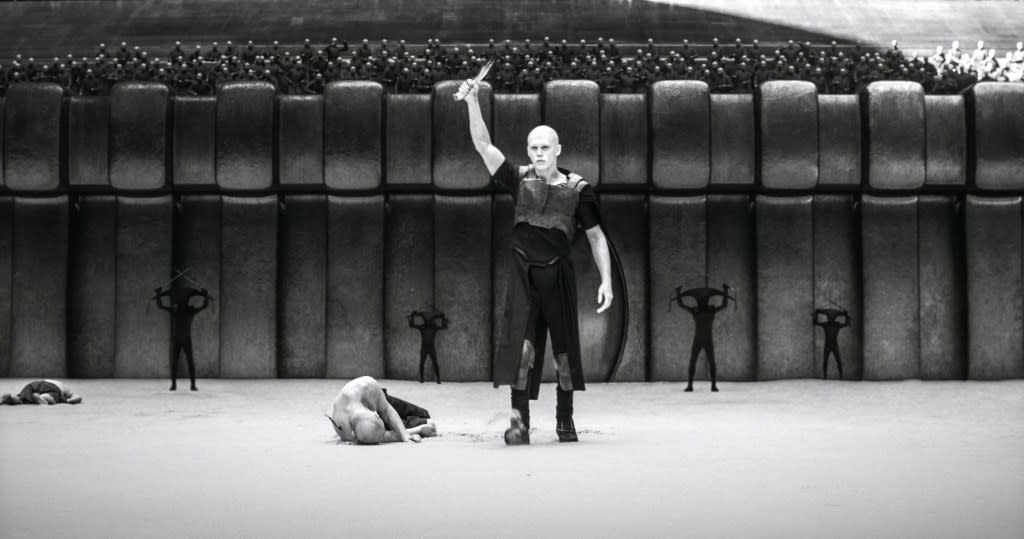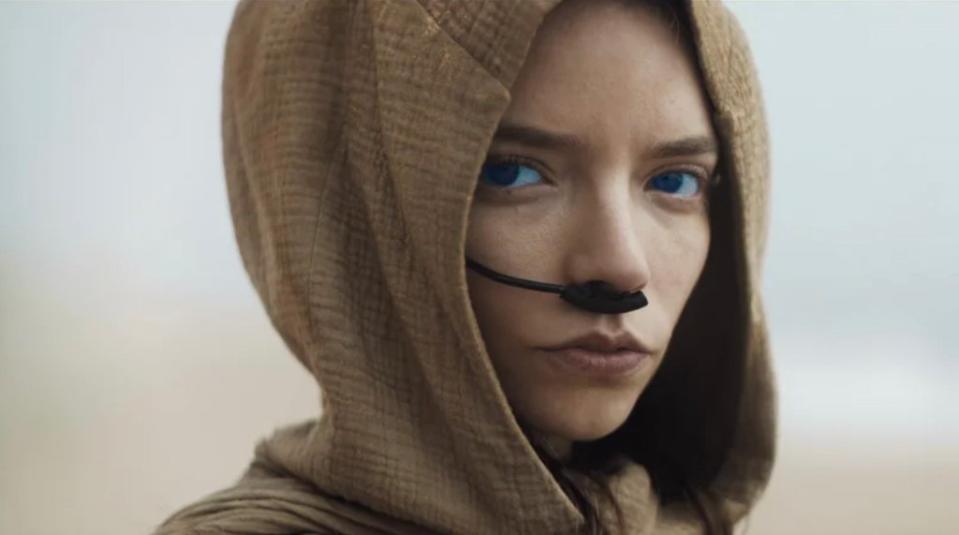3 Iconic Dune: Part Two Scenes Broken Down by Cinematographer Greig Fraser

- Oops!Something went wrong.Please try again later.
ComingSoon Editor-in-Chief spoke to Dune: Part Two cinematographer Greig Fraser about the film’s incredible final fight scene between Paul Atreides and Feyd-Rautha. Fraser discussed the sci-fi epic’s flash-forward, the black-and-white infrared scene, and more. Dune: Part Two is out now on digital and on 4K, Blu-ray, and DVD.
Tyler Treese: Dune: Part Two is such a stunning film. A lot has been said about the black-and-white infrared scene on the homeland of the Harkonnen. What were the difficulties and challenges of shooting that?
Greig Fraser: There’s been a lot of discussion about the fact that infrared records tones differently. So something that might look black to you and I might record as white, or something that’s gray might record as black. So we never really can tell with our eyes what tone things are gonna record as. That was probably the biggest initial challenge technically. We also had issues with flare. Like with infrared effectively all that cameras are seeing, the only light spectrum that camera is seeing is infrared light, which is no visible light. There’s no blue, no green, no red. So it was effectively, I won’t say it was seeing heat, because heat, seeing heat is a different camera, but it was seeing the invisible spectrum. We were having problems with flare.
Because frankly, Feyd is quite white. He’s quite flairy. There’s a lot of infrared coming off Austin’s face and his head, particularly when he is in full sun. So that was really something where the cameras were having trouble with flare. So we had to make sure that we were choosing the right lenses. Occasionally, there were a few lenses we couldn’t shoot with because they just flared too much. So we had to make sure we stopped down, and we made sure that the filters weren’t buckling up. It was a big, big challenge, big lighting challenge.

Another scene that just was so great was when we see Paul’s sister played by Anya Taylor-Joy in that flash-forward we see the ocean. That’s such a stark change from the constant desert. What was your approach for shooting that scene?
Well, what was nice about that was because it was in the script. It was in the script effectively, and it wasn’t a foregone conclusion that we were going to be shooting that scene because often when you are making a film if you go over in some areas, you have to cut back in other areas. That scene we shot in Namibia and it was the only scene that we shot in Namibia. So yeah, the rest of the movie we shot in Budapest, in Jordan, in Italy, and in Abu Dhabi. And for a small crew at the end of filming, we went down to Namibia for a few days to film this scene. It wasn’t a foregone conclusion at the beginning that we were going to be able to do that.
So we wanted to make sure that when we shot it, that it felt like the same desert up to a certain point. It wanted to feel like it was a completely natural segue into an ocean and sand. So we shot, first of all, we shot it initially to feel like it was in Abu Dhabi or that in Arrakis, but then discovering the ocean felt like it was kind of a big change. So yeah, we just kind of kept the camera moving the same way that it was moving in the past.
The scene where Paul goes south and he gives the big speech, we see him wade through this massive crowd. How was it shooting that sequence? Because that’s almost as much of a spectacle as anything else.
We obviously had to carefully plan that because I don’t think that many people existed in Budapest, let alone anywhere else. We couldn’t actually get that many people together. So I think we got a fair few people together, but really I think the planning stage of that, where we were tiling, but for me, what’s great about that is that sense of scale.
Because, again, the film itself is a study of scale. It’s a study of the smallest kind of little kind of desert mouse, the Muad’Dib, all the way through the largest sandworms. So a scene like that kind of helps with that idea of this small human, small physically, normal small human sort of wading through this kind of sea of humanity. It felt like it was analogous there to the sand that the sandworms move through. But that was kind of the thinking was that we make it feel like it was all in that same world.
The post 3 Iconic Dune: Part Two Scenes Broken Down by Cinematographer Greig Fraser appeared first on ComingSoon.net - Movie Trailers, TV & Streaming News, and More.

